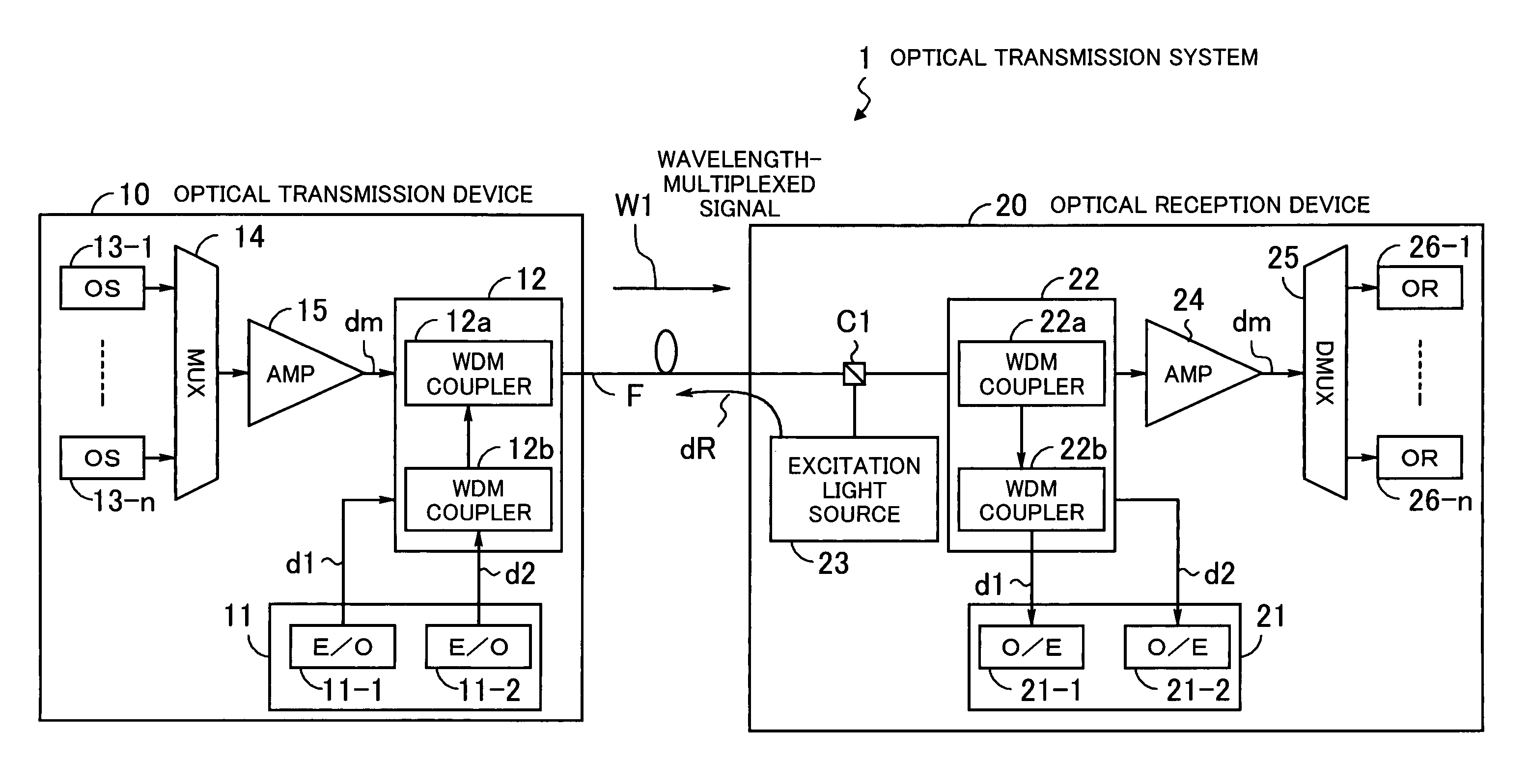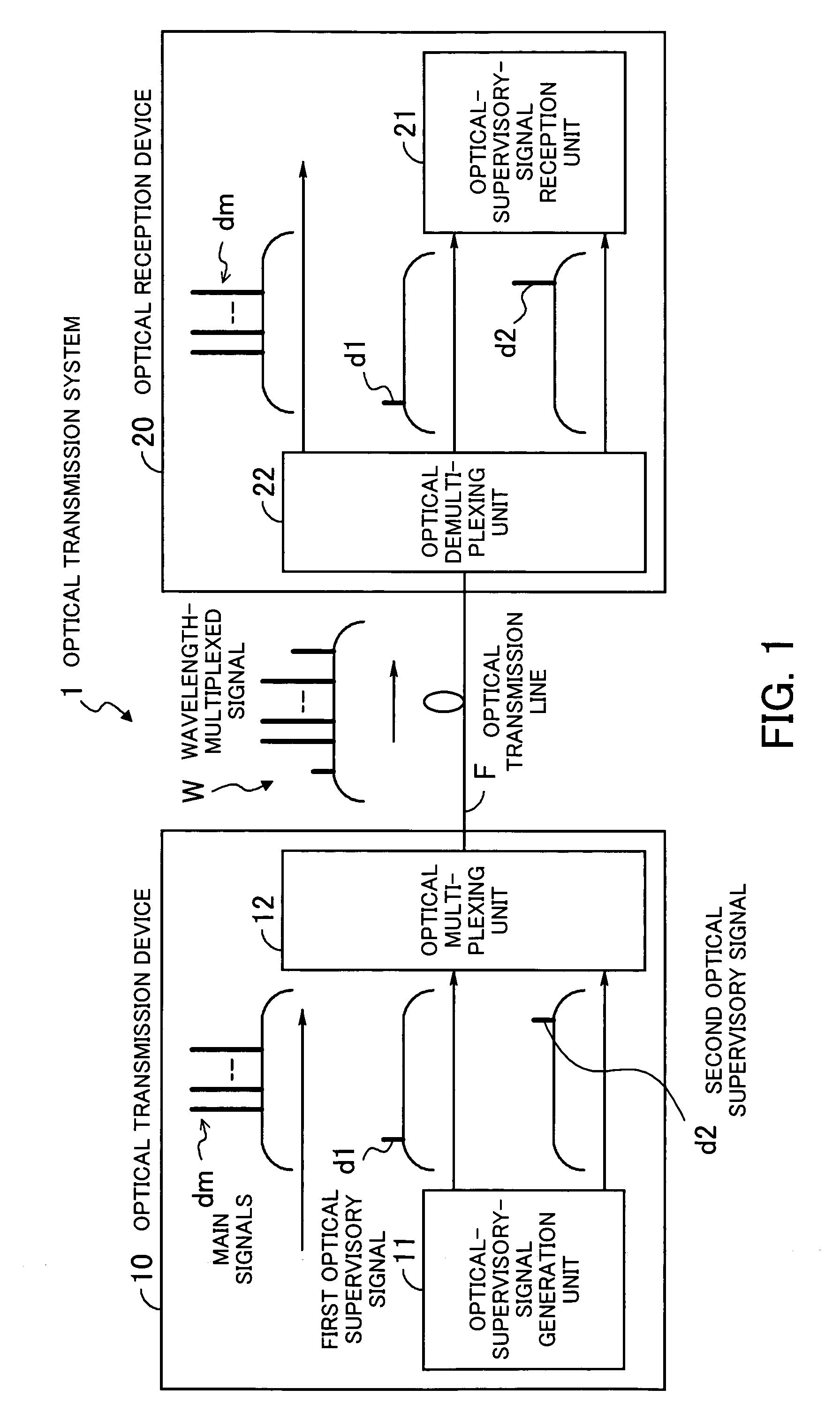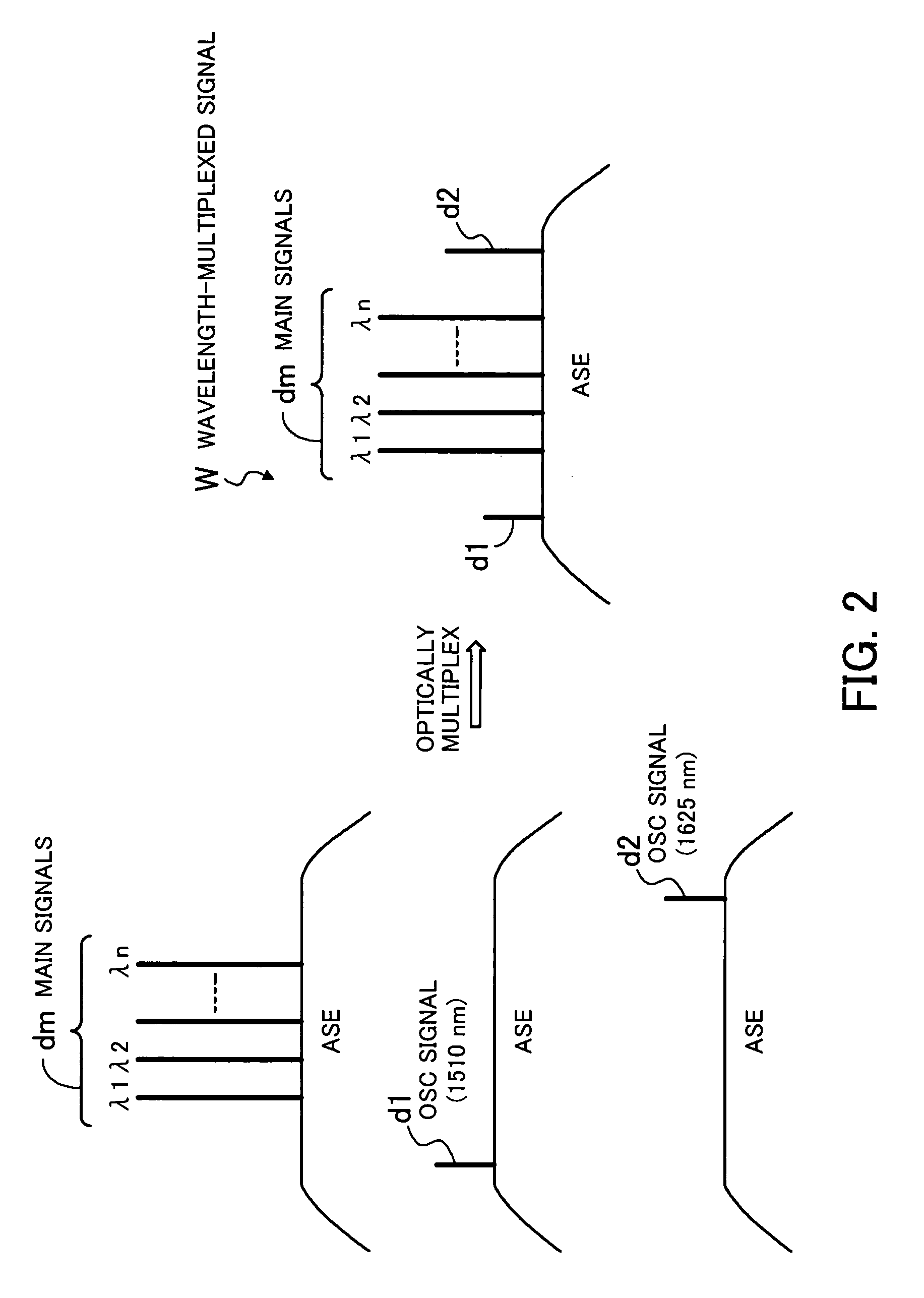Optical transmission system
a transmission system and optical transmission technology, applied in the field of optical transmission systems, can solve the problems of inability to increase the transmission distance, difficult long-distance transmission of osc signals, and large loss of osc signals, and achieve high-quality long-distance optical transmission and prevent inappropriate operations
- Summary
- Abstract
- Description
- Claims
- Application Information
AI Technical Summary
Benefits of technology
Problems solved by technology
Method used
Image
Examples
Embodiment Construction
[0031]Embodiments of the present invention are explained below with reference to drawings.
[0032]FIG. 1 is a diagram illustrating the principle of an optical transmission system according to the present invention. The optical transmission system 1 according to the present invention is a system for performing WDM optical transmission, and includes an optical transmission device 10 and an optical reception device 20. Although only a construction for optical transmission in a downstream direction is illustrated in FIG. 1, it is preferable that the optical transmission device 10 also has the functions of the optical reception device 20 and vice versa.
[0033]The optical transmission device 10 includes an optical-supervisory-signal generation unit 11 (hereinafter referred to as an OSC generation unit) and an optical multiplexing unit 12. The OSC generation unit 11 generates a first optical supervisory signal (hereinafter referred to as a first OSC signal d1) containing transmission-line con...
PUM
 Login to View More
Login to View More Abstract
Description
Claims
Application Information
 Login to View More
Login to View More - R&D
- Intellectual Property
- Life Sciences
- Materials
- Tech Scout
- Unparalleled Data Quality
- Higher Quality Content
- 60% Fewer Hallucinations
Browse by: Latest US Patents, China's latest patents, Technical Efficacy Thesaurus, Application Domain, Technology Topic, Popular Technical Reports.
© 2025 PatSnap. All rights reserved.Legal|Privacy policy|Modern Slavery Act Transparency Statement|Sitemap|About US| Contact US: help@patsnap.com



